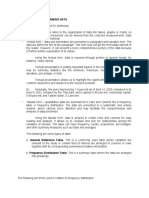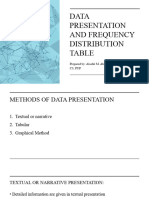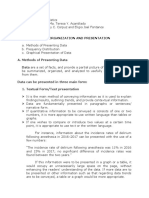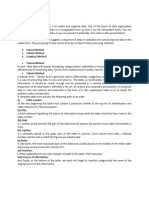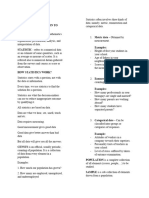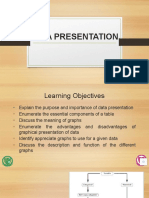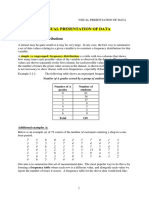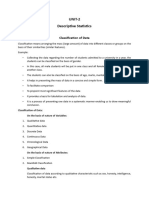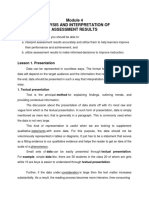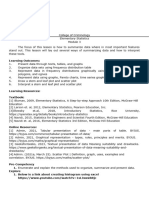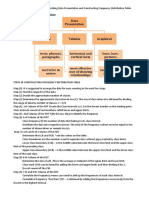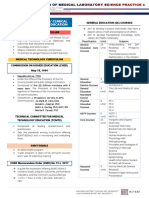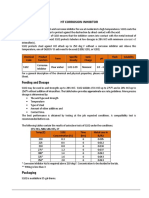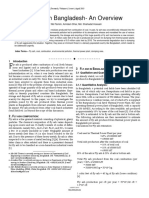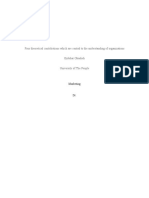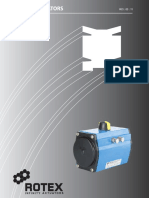0% found this document useful (0 votes)
16 views2 pagesA. B. C. D.: Methods of Data Presentation
The document outlines various methods of data presentation, including textual/narrative, tabular, and graphical formats. Each method is described with its purpose, advantages, and examples, emphasizing the importance of clarity and organization in presenting data. Specific techniques for constructing frequency distribution tables and graphical representations, such as bar graphs and pie charts, are also detailed.
Uploaded by
Dokuro 96Copyright
© © All Rights Reserved
We take content rights seriously. If you suspect this is your content, claim it here.
Available Formats
Download as DOCX, PDF, TXT or read online on Scribd
0% found this document useful (0 votes)
16 views2 pagesA. B. C. D.: Methods of Data Presentation
The document outlines various methods of data presentation, including textual/narrative, tabular, and graphical formats. Each method is described with its purpose, advantages, and examples, emphasizing the importance of clarity and organization in presenting data. Specific techniques for constructing frequency distribution tables and graphical representations, such as bar graphs and pie charts, are also detailed.
Uploaded by
Dokuro 96Copyright
© © All Rights Reserved
We take content rights seriously. If you suspect this is your content, claim it here.
Available Formats
Download as DOCX, PDF, TXT or read online on Scribd
/ 2
